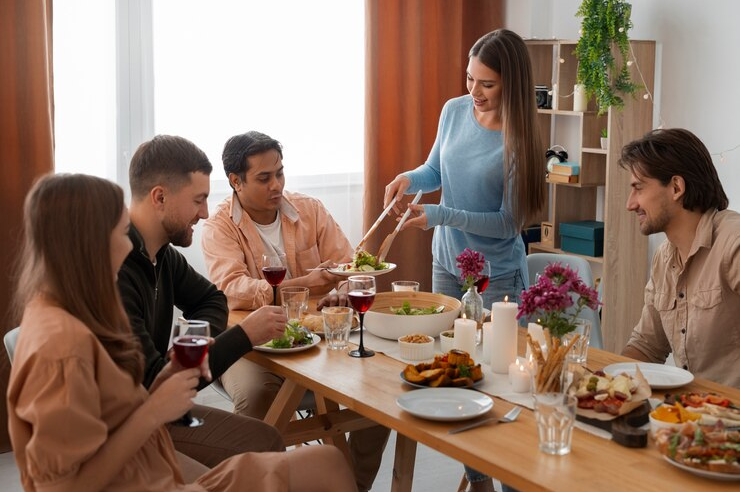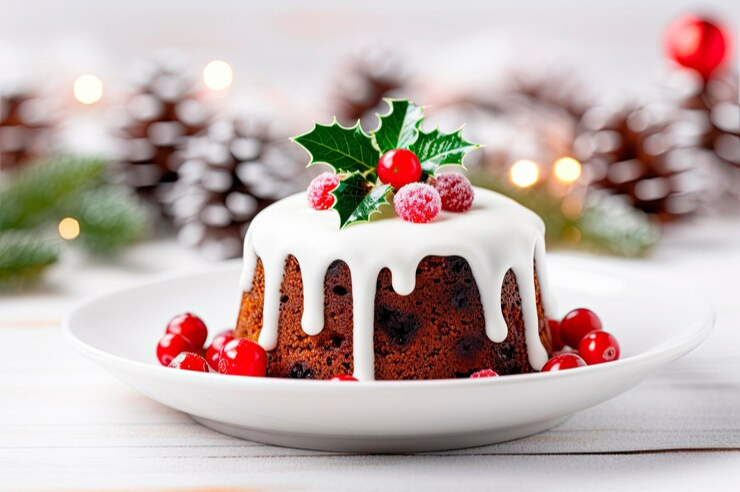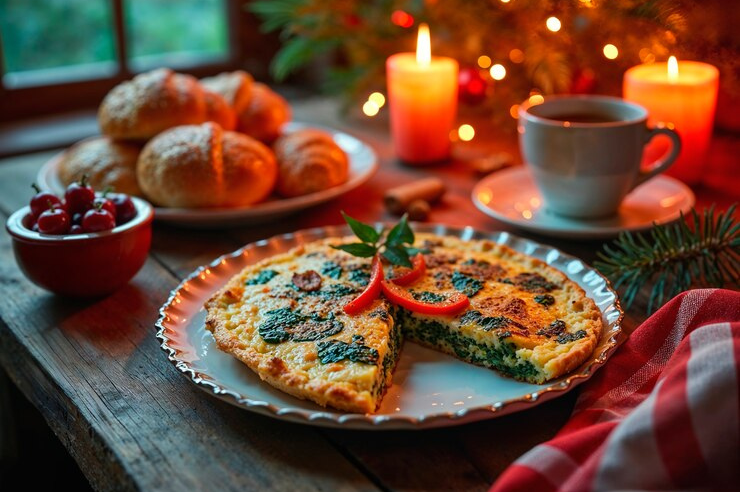
Christmas in America has long been a time to celebrate both religious and cultural traditions. The festive season is marked by family gatherings, feasts, and a wide array of dishes that represent the diversity of the country’s population. Christmas food culture has evolved dramatically over time, thanks in large part to the many waves of immigration that have shaped the country’s food traditions. The influence of immigrant communities has led to a fusion of flavors, ingredients, and recipes that define the modern Christmas table.
Early American Christmas Meals: A Blend of European Traditions
When European settlers first arrived in America, they brought their Christmas culinary traditions with them. Early Christmas meals in the colonies typically featured roasted meats, pies, fruits, and baked goods, all familiar to English, Dutch, and German traditions. The idea of a Christmas feast was synonymous with hearty, rustic meals designed to feed large families.
The Role of Immigration: How Different Ethnic Groups Shaped the Christmas Table
As America grew and became more diverse, immigrant communities began to add their unique food traditions to the Christmas food culture. Irish, Italian, German, Polish, and Jewish immigrants, among others, each contributed special dishes that became integral to holiday celebrations. These food traditions were not only about taste but also a way to maintain connections with their homelands and introduce American society to their cultural heritages.
Irish Influence: St. Patrick’s Day Meets Christmas
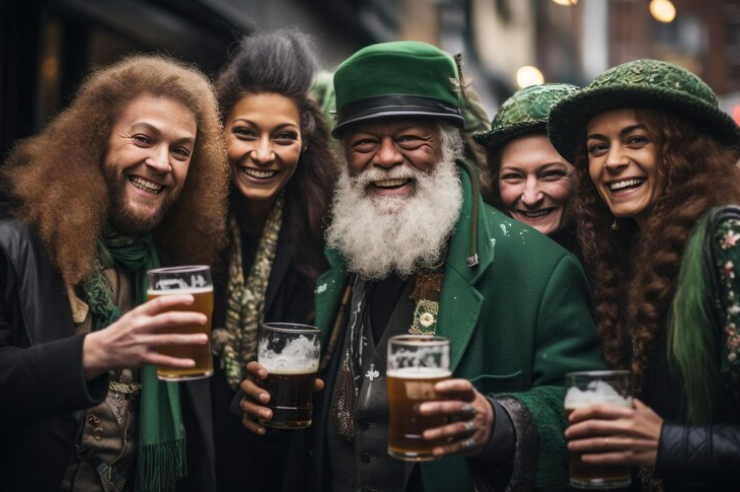
The Irish immigrants, one of the largest immigrant groups to enter the U.S. in the 19th century, brought many of their holiday traditions, including the Christmas meal. Traditional Irish Christmas dinners often included roast beef or ham, as well as hearty stews, potatoes, and soda bread. The influence of the Irish on Christmas food culture can still be seen in modern American kitchens, especially in the beloved tradition of baking Irish soda bread during the holiday season.
Italian Immigrants: Panettone, Pastiera, and More

Italian immigrants contributed a delightful array of sweet treats and savory dishes to the Christmas food culture. Dishes like lasagna and roasted meats became staples in Italian-American households, while pastries such as panettone and cannoli became beloved desserts. For many Italian-American families, these dishes are essential parts of their Christmas celebrations, offering a mix of old-world flavors and new-world innovation.
Polish and German Influence: Pierogi and Stollen on the Christmas Table

Polish immigrants brought dishes such as pierogi and bigos to their Christmas tables, creating a feast that reflected their rich culinary heritage. The Germans contributed their own traditions, including the baking of stollen, a fruit bread filled with nuts, dried fruits, and marzipan. Both pierogi and stollen have become symbols of Christmas gatherings for many families, helping enrich the Christmas food culture with comforting, flavorful options.
Jewish Immigrants and Christmas Foods: A Unique Influence

The Jewish influence on Christmas food culture is one of the most fascinating and unexpected. While Christmas is not traditionally a Jewish holiday, Jewish immigrants played a significant role in shaping the American Christmas dining experience. One of the most notable examples of Jewish influence on Christmas foods is the tradition of having Chinese food on Christmas Day. For Jewish families, Christmas Day was often a quiet day when most other restaurants were closed, making Chinese restaurants a popular destination.
This tradition of Jewish families dining out at Chinese restaurants on Christmas Day has its roots in the early 20th century, when Jewish immigrants in urban areas like New York began frequenting Chinese eateries. The combination of the Chinese restaurant’s open doors and the Jewish community’s desire for a festive, communal meal led to the now-iconic “Jewish Christmas” dinner.
How Jewish Dishes Have Been Incorporated into Christmas Meals
Beyond Chinese food, Jewish immigrants have also influenced the Christmas food culture in other ways. Foods like bagels, lox, kugel, and latkes have become integrated into holiday feasts, particularly in regions with large Jewish populations. Bagels and lox, often associated with Jewish breakfasts, have found a place on many Christmas morning tables, while latkes (potato pancakes) are a popular dish during Hanukkah but have also crossed over into Christmas menus in some households.
The fusion of Jewish and Christian holiday traditions reflects the broader multicultural evolution of American Christmas celebrations. Over the years, Jewish culinary traditions have seamlessly woven into the Christmas food culture, creating an eclectic, multiethnic holiday feast.
The Mexican Influence: A Celebration of Flavor and Family
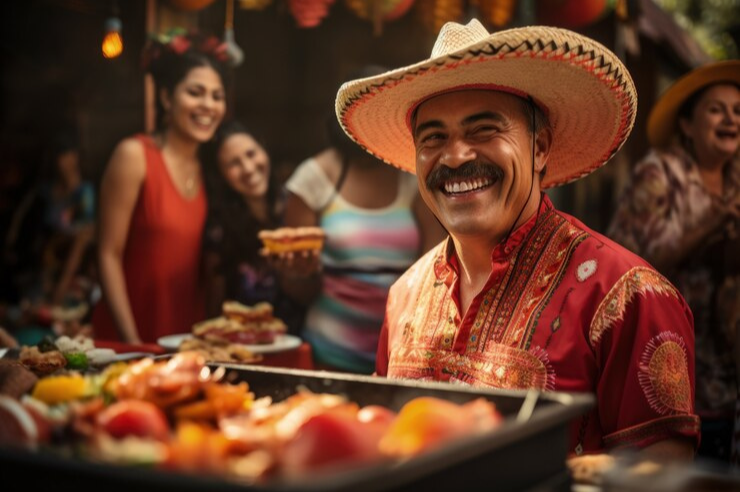
In addition to European influences, Mexican immigrants have had a profound impact on Christmas food culture in the U.S. Mexican-American families introduced festive dishes like tamales, pozole, and buñuelos to their Christmas celebrations. These hearty, flavorful dishes reflect the warmth and community spirit of the holiday season and have become integral parts of modern Christmas feasts across America.
The Rise of Fusion and Regional Variations: How Christmas Food Culture Evolved
The Christmas food culture has continued to evolve as immigrant communities from all corners of the globe continue to shape holiday food traditions. Regional dishes have merged to create fusion feasts, where turkey is served alongside tamales, Chinese food joins the Christmas table, and Italian pastas complement traditional American holiday roasts.
Contemporary Christmas Table: A Global Celebration on the American Plate
Today’s Christmas table is a melting pot of culinary traditions from all over the world. From sushi to Middle Eastern sweets, the Christmas meal is no longer limited to a traditional roast turkey and ham. Immigrants from Africa, the Caribbean, and Southeast Asia are introducing new flavors and dishes, making Christmas a truly global celebration in the American home.
How to Embrace the Global Influence of Christmas Food Culture Today
If you’re looking to incorporate global influences into your own Christmas celebrations, consider adding a fusion dish to your menu. Whether it’s a Mexican pozole, a Chinese-inspired stir-fry, or a Jewish bagel platter, these dishes are a reflection of the diverse food traditions that have shaped modern American Christmas meals.
Conclusion: Embracing Cultural Diversity Through the Christmas Table
The story of Christmas food culture is a reflection of the immigrant experience in America. As different communities have contributed their own dishes and traditions, the American Christmas meal has transformed into a diverse and inclusive celebration of food, family, and culture. By embracing these traditions, we not only enrich our own holiday meals but also honor the vibrant tapestry of cultures that make up the United States.
Feel free to contact us to find out more about us and our services, explore who we are, or discuss advertising opportunities. Don’t overlook subscribing to our magazine for monthly updates, exclusive insights, and more exciting content!


